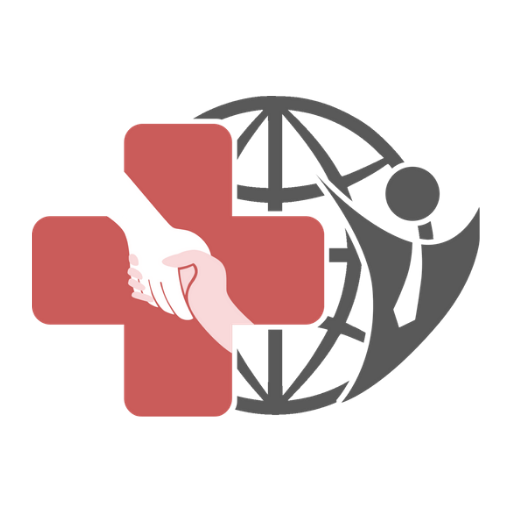Healthcare professionals commonly utilize different medical acronyms and abbreviations. It can be challenging to keep track of all the acronyms, but as you keep studying, it gets easier. Furthermore, knowing the common nursing terms allows you to communicate effectively with your co-workers through a solid command of nursing jargon, enabling you to deliver better patient care.
To help you start your journey as a healthcare worker, we have listed some common nursing terminologies and abbreviations used in the US. So, whether you’re a nurse planning to work in the US, a student interested in being a nurse, or simply someone who has an interest in the medical field, this blog will assist you in knowing what these words mean so that they won’t be quite so confusing moving forward.
Nursing Terms
To interact effectively with one another, nurses adopt a specific vocabulary. Aspiring nurses or USRNs must understand this terminology because several nursing terms are critical and unique to the medical field. These are some examples of common nursing terms you’ll encounter in your USRN career:
Ambulate
Another word for a patient is “ambulate.” An ambulate patient can walk and move around without restriction. By using this phrase, nurses let other nurses know that an ambulatory patient might not require as much monitoring as one who is not.
Banana Bag
A banana bag, also often called a rally bag, is an intravenous bag that contains water, vitamins, and minerals. Banana bags are frequently yellow and are used to treat individuals with chemical imbalances or dietary deficiencies. Banana bags are a standard tool nurses use to alleviate dehydration and support normal muscle and nerve function.
Code Blue
An urgent need for medical care from a group of healthcare professionals, frequently cardiac arrest. Medical professionals may abbreviate code blue as “coding.”
Code Brown
Nurses refer to an incontinence issue as a “code brown.” Code brown is a term that nurses use during their usual shifts, but it can also refer to an outside disaster like a storm, flood, or significant vehicle accident. Medical professionals can differentiate between doctors and nurses because of the highly varied settings in which they utilize this term.
Hat
A hat is a device that fits inside a bathroom toilet and is used to get patient samples. In addition to providing samples for the laboratory, this enables nurses to monitor patients closely. Moreover, nurses place hats in restrooms to monitor a patient for potential sickness.
Sundowning
Nurses will use this phrase when caring for patients with memory-related illnesses like dementia. The term “sundowning” describes the time of day when a patient’s memory deteriorates. Patients can also begin acting in ways that are out of character for them now. Nurses and medical experts refer to the patient’s behavior shift as “sundowning” since it frequently occurs around sunset.
Abbreviations and Acronyms
Acronyms are terms created from the first letter of each sequential portion or significant parts of a complex term. On the other hand, abbreviations are shorter forms of written words or phrases used in place of the entire.
Nursing Acronyms
Nurses have a specialized vocabulary in the nursing and medical field to communicate more effectively and thoroughly understand their fellow nurses. Thus, learning these nursing acronyms is crucial.
- A&D: Admission and Discharge
- ANED: Alive, No Evidence of Disease
- DC: Discontinue or Discharge
- DJD: Degenerative Joint Disease
- DM: Diabetes Mellitus
- DNR: Do Not Resuscitate
- HA: Headache
- ICU: Intensive Care Unit
- IV: Intravenous Therapy
- NP: Neuropsychiatric or Nursing Procedure
- N/V: Nausea or Vomiting
- OOB: Out of Bed
- OR: Operating Room
- SOB: Shortness of Breath
- T: Temperature
- WNL: Within Normal Limits
Nursing Abbreviations
Nurses frequently use abbreviations when making nursing notes and filling out medical paperwork. The following is a list of some of the medical abbreviations nurses in the US often employ.
- Abd: Abdomen
- Amb: Ambulation
- Approx: Approximately
- Cath: Catheter
- cap: Capsule
- Disch or Dish: Discharge
- Isol: Isolation
- Mat: Maternity
- Nsy: Nursery
- Noct: Nocturne or At Night
- Ortho: Orthopedics
- Stat: Statim or Immediately
- Surg: Surgery
Most nurses in the US frequently employ acronyms and abbreviations to save time and let their co-workers know about the patient’s well-fare, medical procedures, and medications. Additionally, future nurses must comprehend this terminology because several nursing terms are unique to the field.
The Bottom Line
Healthcare personnel always use medical terminologies, abbreviations, and acronyms to the point that they develop a specific vernacular to communicate effectively with one another. They also use these terminologies in writing nursing notes or completing medical documentation.
So, aspiring USRNs must become familiar with the common nursing abbreviations and terms. It might be challenging at first, but learning and memorizing them is not impossible. If you can appropriately interact with your co-workers and speak the nursing language, you can give patients better care.
Ready to pursue your nursing career in the US? Intermed Transcontinental Staffing is here with the foremost goal of assisting you and other fellow nurses to work and migrate to the United States. So send us your application, and let’s start your American Dream with Intermed here and now!



